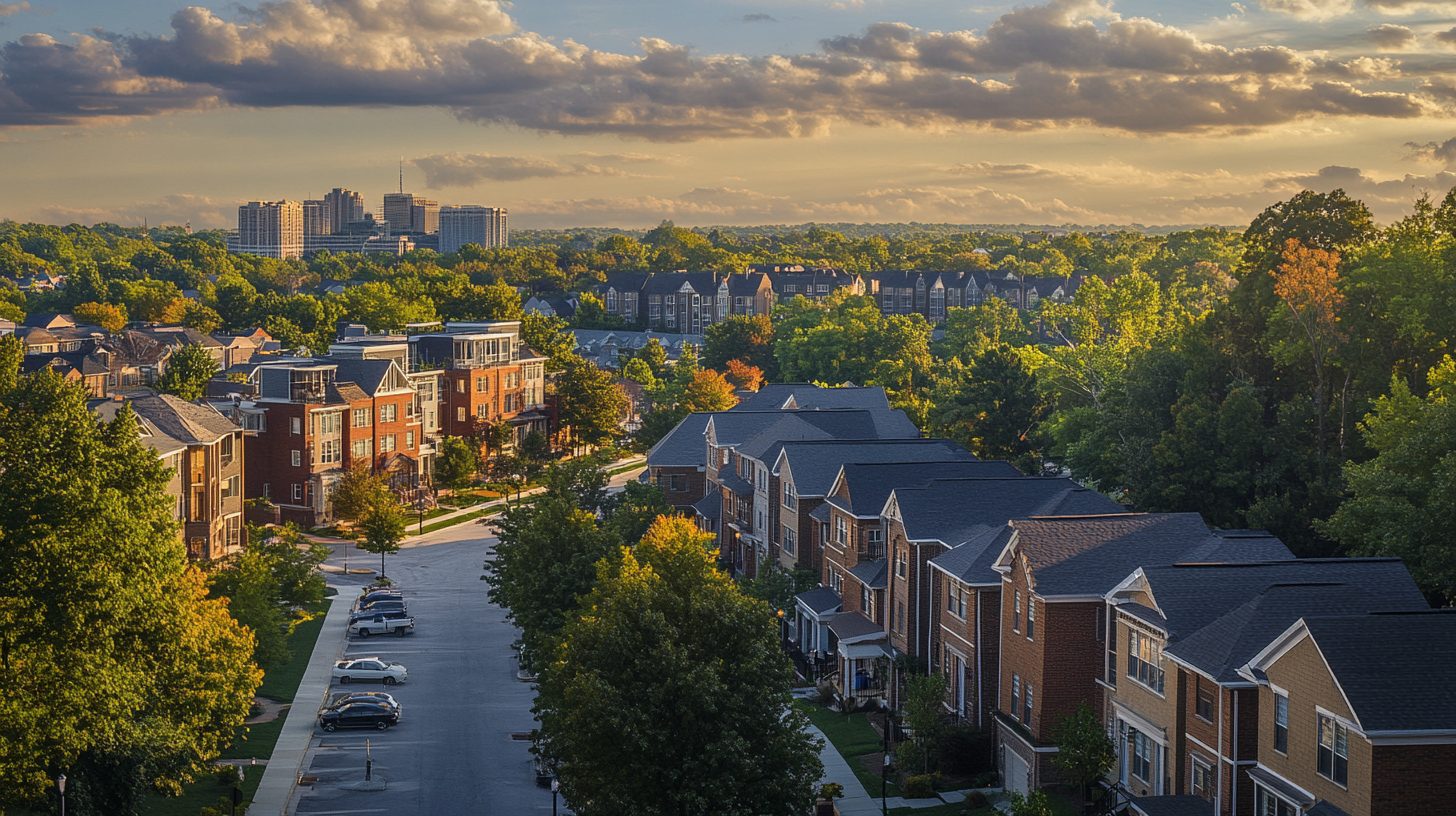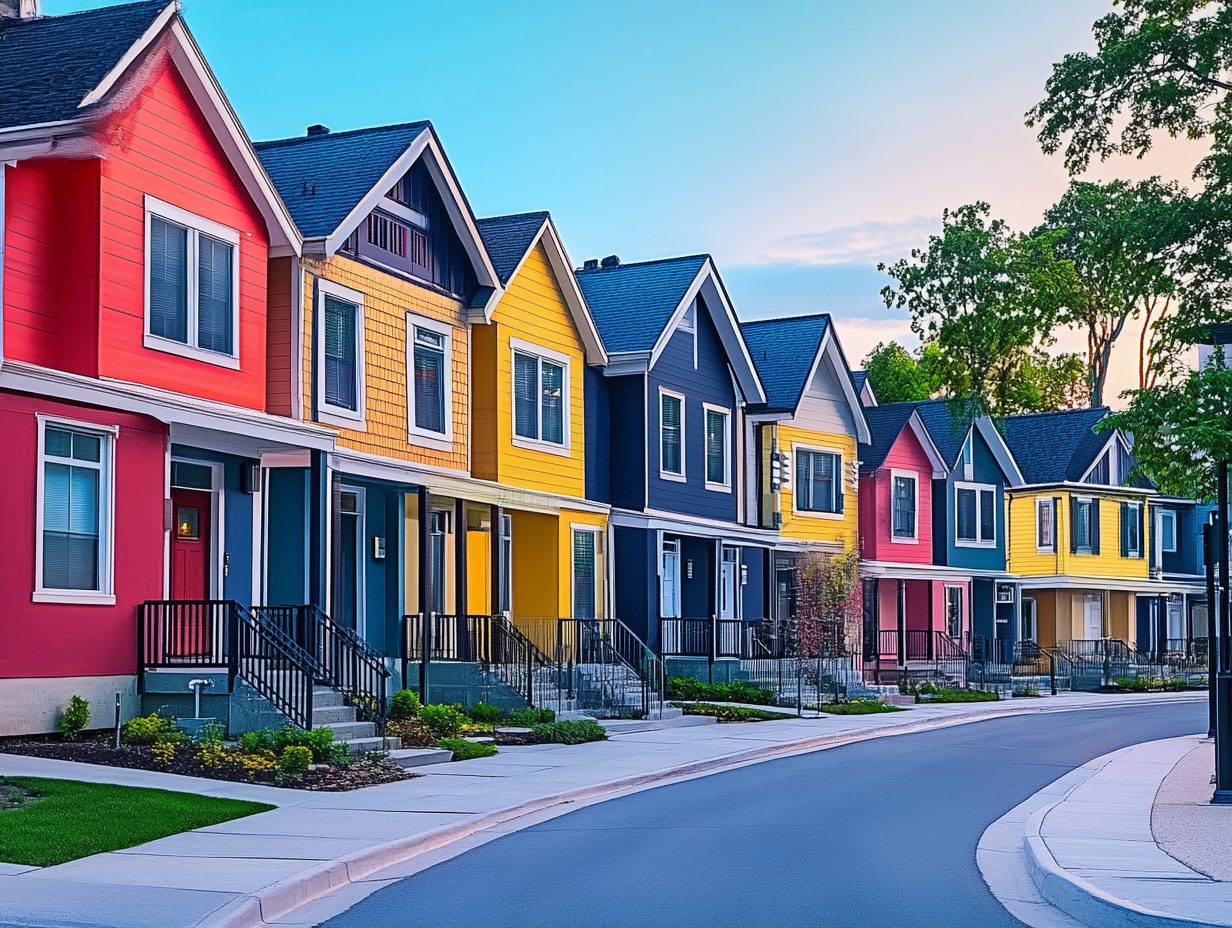Overview
Silver Spring, MD is one of those pocket neighborhoods that somehow still flies under the radar, even though it’s practically right on Washington, DC’s doorstep. In 2025, the population is hovering around 85,000—and still climbing—as folks from all walks of life converge on this vibrant suburb for its walkability, diverse culture, and (slightly) lower housing costs compared to the District. Real estate here isn’t exactly cheap though; median home prices hover around the mid-$500Ks, with a steady uptick in demand thanks to ongoing urban development and new projects like the Purple Line (if it ever fully opens). Are people moving in or out? Mostly in, lured by its proximity to DC jobs and a distinctly eclectic vibe that’s part hip, part historic, and wholly unique.
Pros of Moving to Silver Spring
Let’s cut straight to the heart of why people swarm to Silver Spring: It’s close enough to DC that you can smell the political power in the air, but far enough to carve out a life that doesn’t revolve around Capitol Hill. The Red Line Metro station is smack in downtown, so if you hate driving or want to avoid that dreaded Beltway commute, Silver Spring has your back.
Vibrant Downtown Scene
Downtown Silver Spring has morphed into a hub of culture, shopping, and downright good eats. Whether you’re hitting up The Fillmore for a live show, catching an indie flick at the AFI Silver Theatre, or sampling Ethiopian cuisine along Fenton Street, there’s always something going on. The artsy energy extends to street festivals, farmers markets, and late-night coffee shops buzzing with college kids and remote workers tapping away on laptops. If you’re the type that thrives on urban hustle without the full throttle of DC, you’ll dig it here.
Diversity That’s Not Just a Buzzword
Silver Spring’s claim to fame is its diversity—walk a few blocks, and you’ll hear different languages, see a mix of international grocery stores, and find ethnic food that’ll expand your palate. From African to Latin American to Middle Eastern, the range is massive. And this isn’t a “token diversity” situation; it’s woven into the fabric of the community. Multicultural festivals and neighborhood block parties aren’t just annual events, they’re the living heartbeat of the area.
Surprisingly Walkable
Some suburbs boast walkability but give you nothing but sidewalks leading to nowhere. Not Silver Spring. Especially in the downtown core, you can walk to restaurants, bars, grocery stores, movie theaters, and local boutiques—handy for those nights you want to ditch the car. Side note: If you’re a fan of late-night munchies, the local 24-hour spots and food trucks might just become your best friends.
Proximity to DC (Without the DC Tax Bracket)
Part of the Silver Spring charm is that it’s literally a few Metro stops from the heart of the nation’s capital. That means job opportunities abound—not just in government, but also nonprofits, tech, healthcare, and everything in between. You can chase your big-city dreams and still retreat to a more relaxed suburban setting at the end of the day. Plus, you might dodge some of those sky-high District taxes, though Montgomery County isn’t exactly a bargain either.
Evolving Neighborhoods & Development
Silver Spring isn’t just resting on its existing laurels—it’s evolving. The Purple Line construction (yes, it’s been a saga) promises more connectivity. You’ve got a blend of old-school mid-century homes, brand-new condos, and everything in between. If you’re eyeing a “fixer-upper,” you can still find pockets where renovations are going full throttle. The community also leans progressive, with local leaders often pushing for greener initiatives, more affordable housing, and robust public services.
Community-Centric Vibe
Despite the bustling downtown, Silver Spring can still surprise you with a small-town warmth. Neighbors look out for each other, local businesses host events, and volunteer groups are everywhere. There’s something refreshing about a place that encourages block parties while also hosting high-profile music events. If you’re new here, jumping into community activities is a surefire way to get connected fast.
Bottom Line: If you crave diversity, walkability, and a place teeming with cultural flair—yet still want easy access to DC’s professional playground—Silver Spring might just be your perfect landing spot. But hey, perfection doesn’t exist, right? Let’s get to the flip side.
Cons of Moving to Silver Spring
You know how it goes: No suburban enclave near a major metropolis is all sunshine and roses. Silver Spring may be a beacon of multicultural charm, but it’s also got its fair share of headaches.
Cost of Living Creep
First up, let’s talk money. Silver Spring isn’t as pricey as, say, Georgetown or Bethesda, but it’s no budget-friendly paradise, either. Home prices here have been climbing steadily; by 2025, you’re looking at median prices in the mid-$500Ks. Renters, you’re not immune—apartment complexes in and around downtown can charge a premium for that “walk-to-everything” lifestyle. Sure, you can find more modest options if you hunt around, but be prepared for some sticker shock if you’re coming from a less saturated market.
Congestion & Commuter Chaos
Living this close to DC has its perks, but it also means you’re dealing with typical Beltway congestion. Even if you embrace public transit, rush hour on the Metro can feel like a can of sardines—especially if there’s any delay (and if you’ve ridden the Red Line, you know delays happen). Driving? You’ll be duking it out on Georgia Avenue or 16th Street with thousands of other motorists every morning. Weekend traffic is no joke, either—Silver Spring’s popularity means the roads don’t get much rest.
Construction, Everywhere
Remember the Purple Line? Well, that’s been a never-ending saga of detours, noise, and orange cones. The idea is fantastic: a light-rail system linking Bethesda to New Carrollton, passing right through Silver Spring. But the reality, at least right now, is a patchwork of construction zones that can choke local roads and add a layer of dust to everything. Factor in private development (new condos, mixed-use buildings) and you’ve got a town perpetually under the hum of heavy machinery.
Commute Times Aren’t Always Rosy
Yes, Silver Spring is closer to DC than many other suburban outposts. But that doesn’t mean your commute will be a breeze. If you’re heading into downtown DC during peak hours, expect Metro stations packed to the brim or highways that crawl. Even if you’re lucky enough to snag a seat on the train, you’re still looking at around 20-30 minutes into the city (longer if you have to transfer). If your job is outside the main District corridor, plan on extra drive time (and possibly extra frustration).
Lack of ‘Flashy’ Amenities (Compared to DC)
While downtown Silver Spring is vibrant, it’s not the same as living in the heart of the District. Sure, you have The Fillmore and the AFI Theatre, but you won’t find the same volume of Michelin-starred restaurants or major nightlife hubs. If you’re craving the after-hours energy of U Street or Adams Morgan, be prepared to hop on the Metro or take a 20-minute Uber ride. Some say it’s a sweet trade-off, but it’s still a con if you want that city buzz every night.
A Bit of Identity Crisis
Silver Spring has been undergoing a kind of personality transformation. Is it a trendy mini-urban center with high-rise apartments, or a cozy suburb full of single-family homes and quiet streets? The truth is, it’s both—which can leave the community feeling a bit disjointed at times. Some corners look like typical suburbia, while others are forging an urban-chic identity. Depending on who you ask, that’s either super exciting or just plain confusing.
Bottom Line: If you’re allergic to traffic, construction noise, and a growing cost of living, Silver Spring might test your patience. It’s an ever-evolving place—equal parts promise and chaos. Decide if that energy is something you’ll revel in or resent once the honeymoon phase wears off.
Wrapping Up
Silver Spring is like that funky friend who always has something new going on—a fresh art exhibit, a street festival, a vegan pop-up cafe—never a dull moment, but also never fully settled. Its diversity, walkability, and closeness to DC draw in a steady flow of new residents every year, pushing both rent and real estate prices upward. Yet, with that surge comes the headaches: commuter traffic, endless construction, and a cost of living that can leave you wincing at your bank statement. Ultimately, the question is whether the eclectic energy and urban-meets-suburban charm are worth the hustle. If you’re up for it, Silver Spring might just steal your heart. If not, well, there are quieter corners of Maryland calling your name.
FAQs
- Is Silver Spring family-friendly?
Absolutely. You’ll find many family-friendly parks, well-regarded schools, and a community vibe in certain residential pockets. But keep an eye on the neighborhood you choose—some areas are more suburban than others. - How reliable is public transportation?
The Red Line is a key asset, but it’s not always perfect. Expect occasional delays, especially during peak hours. Bus routes exist, but traffic can slow them down. - What about safety in Silver Spring?
Like any busy suburb, safety can vary by neighborhood. Generally, downtown is well-lit and patrolled, but do your due diligence on specific areas if safety is a top concern. - Are there affordable housing options?
“Affordable” is relative. You can find older apartments and condos at lower prices, particularly outside the downtown core, but overall, Silver Spring leans on the pricey side. - Does the Purple Line make commuting easier?
In theory, yes—once it’s fully operational. Currently, construction can be a headache, but the long-term goal is better connectivity across Montgomery and Prince George’s counties. - What’s the nightlife like?
Downtown Silver Spring has some bars and live music venues, but it won’t rival DC’s party scene. If you’re big on clubbing, you’ll likely venture into the city. - How bad can the traffic really get?
Beltway traffic can be notorious, and rush hour in Silver Spring is no picnic. Plan your commute times or lean heavily on Metro if you hate bumper-to-bumper drama.



